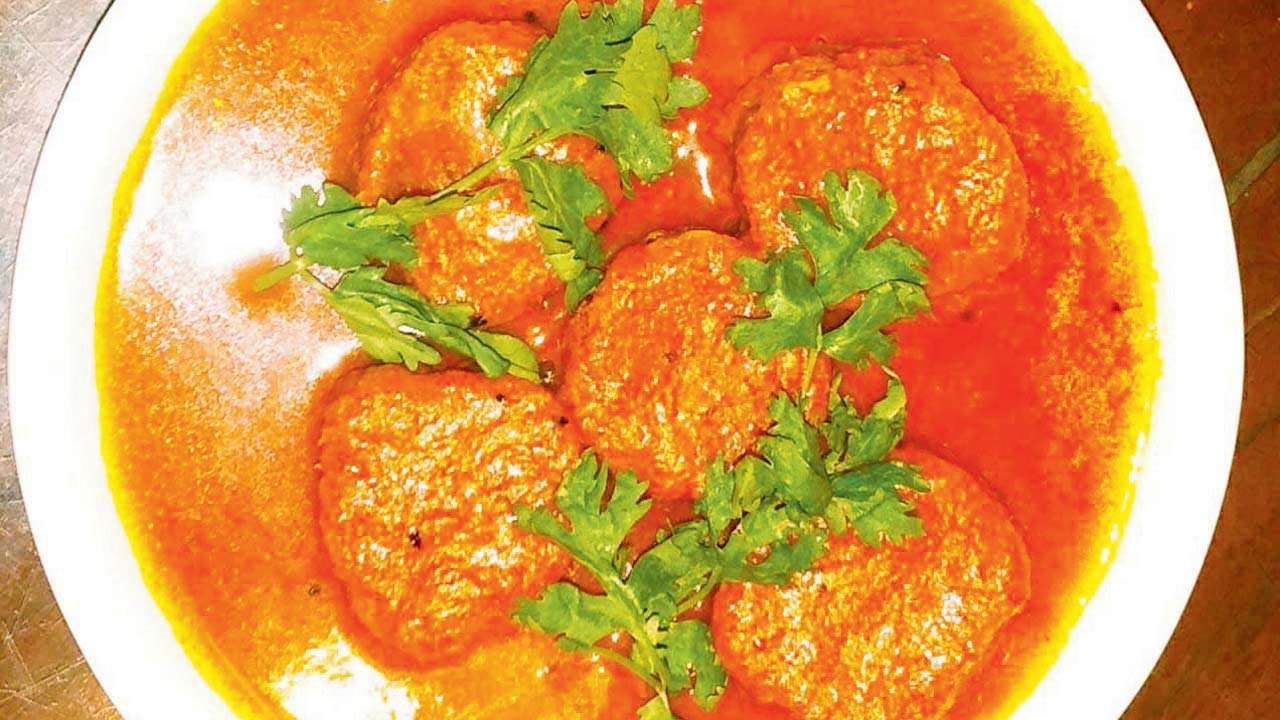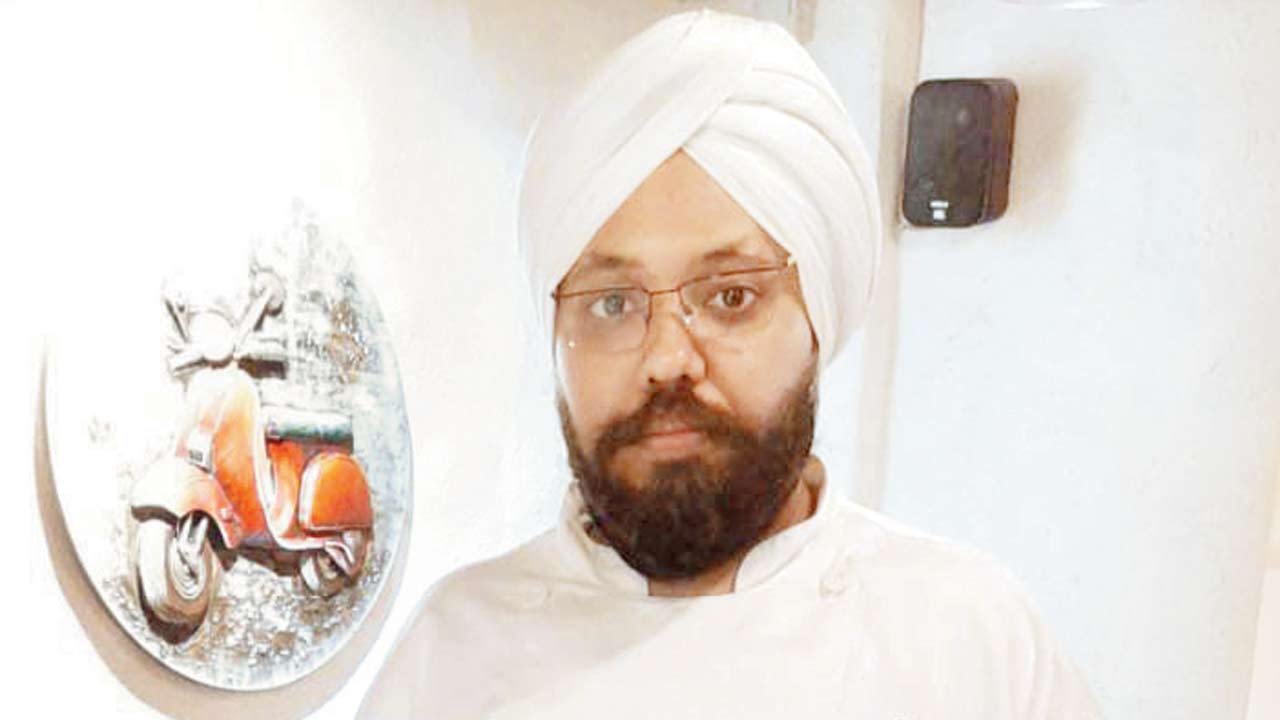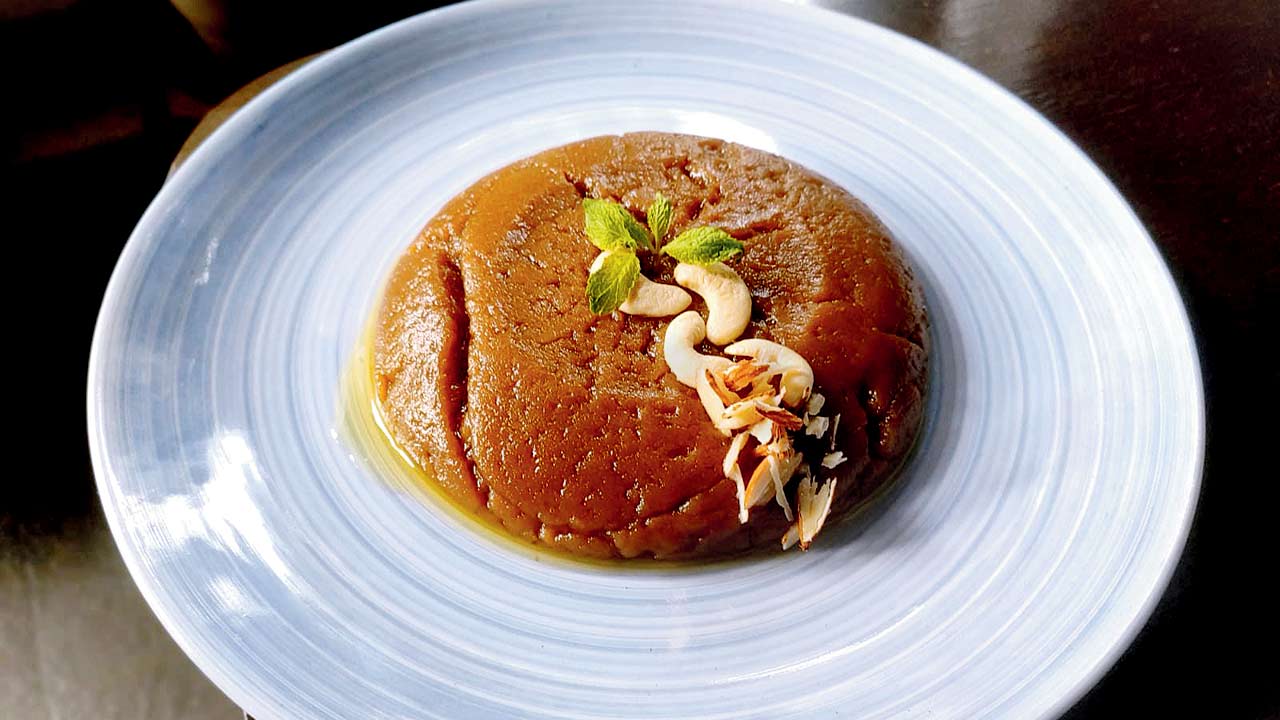With Easter, Vishu, Baisakhi and Poila Boishakh lined up, chefs from different communities dip into their family archives to share nostalgia-evoking traditional recipes

A lavish Bengali spread
Musical Poila Boishakh
A medley of Rabindra Sangeet and soulful poetry, flavoured with slow-cooked kosha mangsho (a sort of mutton bhuna), aromatic basanti pulao and crispy fish fry. This is how Manna De — the owner of the 17-year-old The Calcutta Club in Oshiwara — remembers Poila Boishakh at home. Growing up in Assam, the Bengali New Year festivities would coincide with the harvest festival, Rongali Bihu, he recalls.

“My father was musically inclined so we’d have a cultural assembly. Of course, this would be followed by a grand feast — led by fish fry, my favourite. The aroma of kosha mangsho would fill the air. Ilish or hilsa also found a central spot on the table, along with chitol maachher muitha [curry made with dumplings of Indian featherback fish] which my father loved and cooked,” shares De.
Chitol maachher muitha

Ingredients
>> 500 gm boneless chitol
>> 200 gm potato (boiled)
>> 1 tbsp jeera-dhania paste
>> 4 tbsp ginger-garlic paste
>> 5 to 6 tbsp ginger-garlic-onion paste >> Salt to taste >> A pinch of sugar
>> 4 tbsp mustard oil >> 1 tbsp garam masala whole spices >> 1/2 tbsp cumin seeds
>> 3 green chillies
>> 1 tbsp turmeric
Method
To prepare the muitha, mix the fish, potato, jeera-dhaniya paste, four tbsp ginger-garlic paste, salt and sugar along with the oil. Mix together to form a dough and roll into log-like dumplings. Bring water to a boil in a pot, and dunk the muithas. Let them cook for 10 minutes or till they are cooked and don’t fall apart. Once cooled, cut into desired shape. In another pan, temper mustard oil with whole garam masala spices, turmeric, crushed cumin seeds, chillies and five to six tbsp ginger-garlic-onion paste. Drop the muithas and let them cook. Once the muithas are redolent with the spices, add some water to make a gravy, and bring to a boil.
Colours of Baisakhi

Having been born in a family, which was into the hospitality business, chef Jasjit Singh Keer of Alfredo’s Malad grew up around food. “I used to spend time in the kitchen as a prep cook for my family. My first word as a kid was kha [eat],” he tells us. The yellow-hued Baisakhi festival, which marks the Sikh New Year, was thus centred on food. “My grandparents and parents used to take us to the gurudwara. There would be traditional dance, kirtan, stalls selling traditional goods, turbans and toys, and festive food,” he reminisces. Among the dishes whipped up at home were Punjabi kadhi (made with curd and besan), pindi chana, meethe peeley chawal, kesar phirni, lassi and kada prashad, which was the chef’s favourite.
Kada prashad

Ingredients
>> 1 cup atta (whole-wheat flour) >> 1 cup brown sugar or 200 gm sugar>> 1 cup ghee >> 3 cups water
Method
Take a cup of sugar in a saucepan; add water. Bring the sugar and water mixture to a boil. Meanwhile, place a heavy-bottomed kadhai or pan on a low flame. Add ghee and let it melt. Then, tip in the whole-wheat flour. Stir and mix the flour with ghee. Mix well to get a mixture without lumps. On a low flame, begin to fry the atta in ghee; keep stirring. The colour of the flour will change as you keep cooking it. Keep on stirring the flour until it turns brown/dark golden evenly. Pour in the sugar-water solution slowly and keep stirring. The atta should have a nutty fragrance, and the consistency of the kada prashad will also change. When the kada prashad has a thick pudding-like consistency, switch off the flame. Serve it hot or warm.
A grand Easter lunch

Chef Freny Fernandes, founder and chef at Monèr Bistro & Dessert Bar, recalls eating the classic East Indian balloon bread, fugia, at Easter lunches. The bread is usually made for weddings, and eaten as a tea-time snack or with a spicy curry. But being a family favourite, the chef’s mother also makes fugias for Easter, to pair with roast chicken with stuffing and a meat-based curry prepared using her own recipe of bottle masala. There are two varieties of fugias: salty and sweet. And this slightly sweet bread with spicy curry creates a perfect balance. “Ending Lent, a time when my family usually abstains from non-vegetarian food, with this Easter lunch with fugias is the best feeling,” she tells us.
Traditional East Indian fugias

Easter lunch at the Fernandes’ comprises potato chops, fugias, bheja fry, chicken liver fry and biryani
Ingredients
>> 1 kg flour >> 2 eggs
>> 2 tbsps >> sugar >> 1 cup
>> coconut milk >> 7 gm yeast>> Salt >> 1-2 tbsp oil (hot) >> Oil to fry, as needed
Method
Put all the dry ingredients in a bowl. Add the wet ingredients and mix for seven to 10 minutes until it forms a smooth dough. Cover the bowl with a towel and let it proof overnight. In a deep frying pan, heat the oil for frying. Put one tbsp of dough at a time and cook until golden. Serve hot.
Vishu diversity

Sadhya headlines the food celebrations of Vishu, the traditional New Year widely celebrated in Kerala and Tamil Nadu. Here in the city, Merilyn and Sherley Joseph, owners of Just Kerala, let us in on the Vishu celebrations at the restaurant. “A lovely annual custom that happens every year is the staff lunch; we all sit in a circle for a sadhya.” The sisters mark this tradition as special because this circle transcends all geographical and cultural boundaries, and organisational hierarchies. “Our staff members hail from all corners of Kerala and belong to various religions that don’t typically celebrate Vishu. But they come together to make the sadhya service a success, and then once again to enjoy the food prepared.” Their favourite dish from the celebration is mambazha pulissery, a curry made
with mango.
Mambazha pulissery

Ingredients
>> 1 ripening mango (peeled and sliced) >> 2 cups water >> 3 green chillies >> 1/2 tsp turmeric powder >> 1/4 cup grated coconut >> 1 tsp jeera >> 1 tbsp jaggery >> 1/4 cup curd >> 1 tbsp coconut oil
>> 1/2 tsp mustard seeds >> 1 sprig curry leaves >> 2-3 dry red chillies >> Salt to taste

Vishu sadhya at Just Kerala
Method
In a deep pan, add water, mango slices, green chillies and turmeric powder; boil till the mangoes are well-cooked. Grind grated coconut, jeera and jaggery with a little water into a smooth paste. Add the paste to the softened mangoes. Keep stirring to avoid curdling and once thick, lower the flame. Beat the curd lightly and add it to the curry. Switch off the flame. In a pan, heat the coconut oil, add mustard seeds and let them crackle. Add curry leaves and dry red chillies. When crisp, add this to the mambazha pulissery. Add salt to taste.
 Subscribe today by clicking the link and stay updated with the latest news!" Click here!
Subscribe today by clicking the link and stay updated with the latest news!" Click here!










